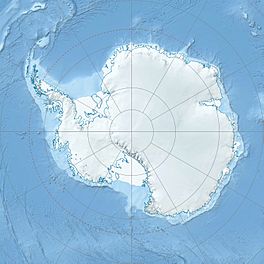Thomson Glacier facts for kids
Quick facts for kids Thomson Glacier |
|
|---|---|
| Location | Bryan Coast |
| Coordinates | 73°27′S 80°13′W / 73.450°S 80.217°W |
| Length | 8 nmi (15 km; 9 mi) |
| Thickness | unknown |
| Status | unknown |
Thomson Glacier (73°27′S 80°13′W / 73.450°S 80.217°W) is a large river of ice found in Antarctica. It stretches about 15 kilometers (or 8 nautical miles) long. This amazing glacier flows along the Bryan Coast, moving slowly between two areas called Rydberg Peninsula and Wirth Peninsula, eventually reaching Fladerer Bay.
Contents
What is Thomson Glacier?
A glacier is like a very slow-moving river made of ice. Thomson Glacier is one of these icy rivers located in the cold continent of Antarctica. It is quite long, measuring about 15 kilometers from one end to the other. Imagine 150 football fields lined up – that's roughly how long it is!
Where is Thomson Glacier Located?
Thomson Glacier is found in a part of Antarctica known as the Bryan Coast. It flows between two land areas called Rydberg Peninsula and Wirth Peninsula. A peninsula is a piece of land almost surrounded by water but connected to the mainland on one side. As the glacier moves, it empties into a body of water called Fladerer Bay.
How Thomson Glacier Got Its Name
This glacier was given its name by a group called the Advisory Committee on Antarctic Names (US-ACAN). This committee is responsible for naming places in Antarctica. They decided to name the glacier after a very important person.
Who Was Janet W. Thomson?
Thomson Glacier is named in honor of Janet W. Thomson. She was a key member of the British Antarctic Survey, an organization that studies Antarctica. From the 1980s until 2002, Janet Thomson was in charge of making maps of the region. She also worked on a special project with both American and British scientists. This project created important maps that showed how glaciers and coastlines in the Antarctic Peninsula were changing over time. Naming the glacier after her was a way to recognize her valuable contributions to understanding Antarctica.


